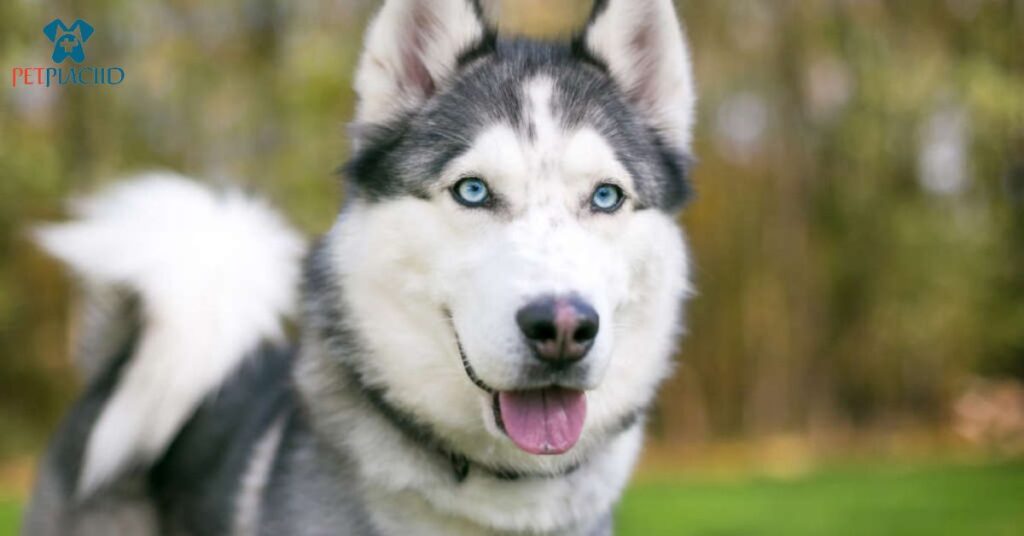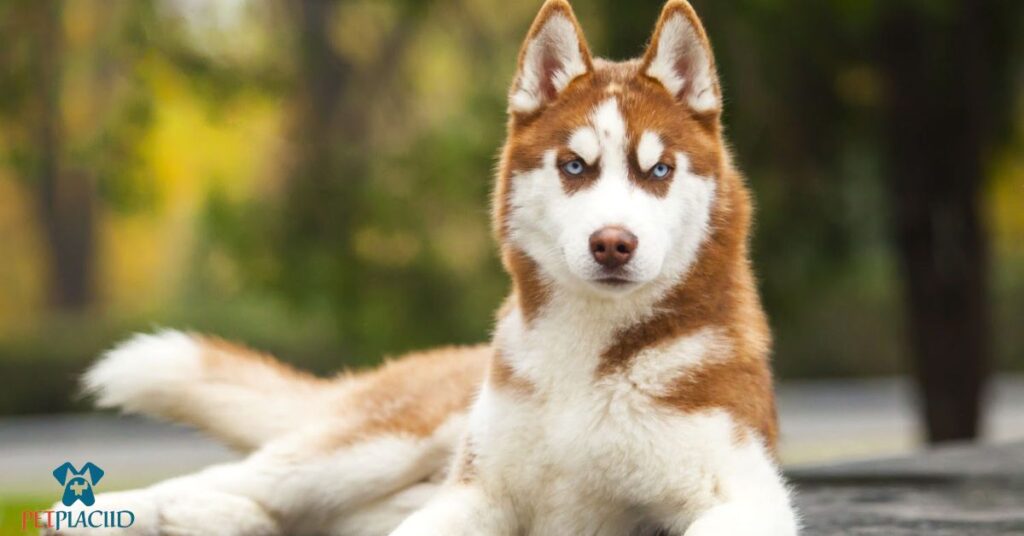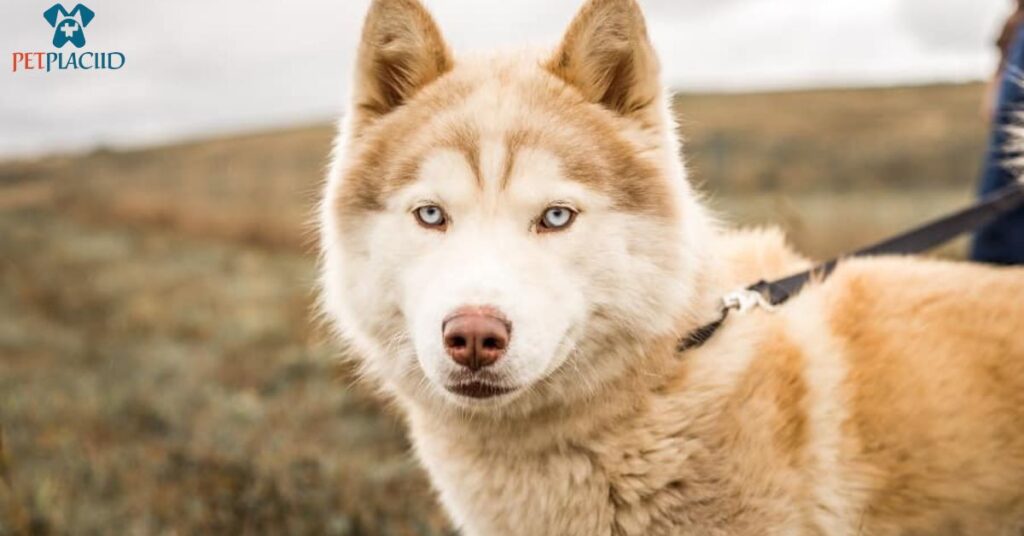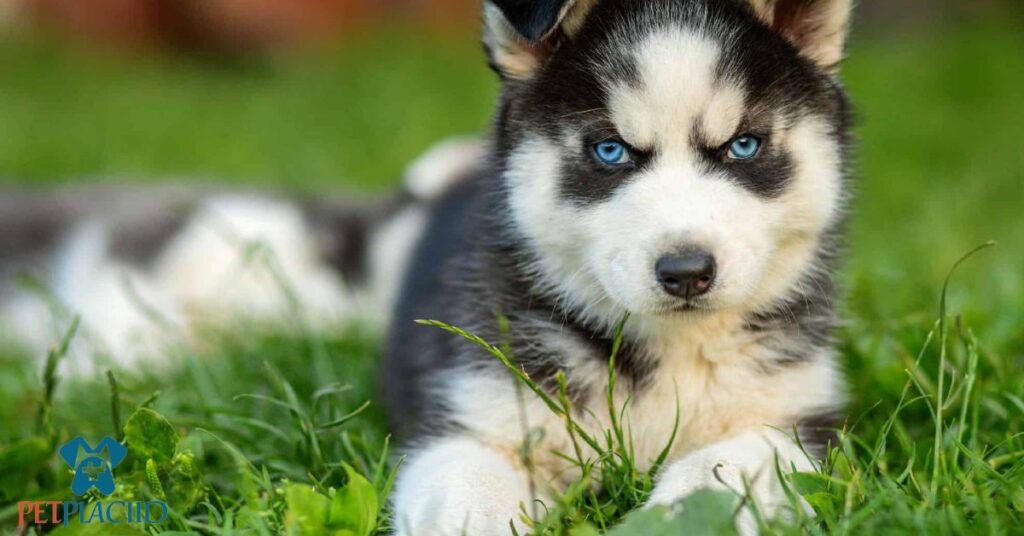A Goldendoodle Husky mix is a cross between a Goldendoodle and a Siberian Husky, combining traits from both breeds. They’re known for their friendly nature, intelligence, and high energy levels. These hybrids make affectionate and lively companions.
The ultimate guide to understanding the charming Goldendoodle Husky mix. Dive into a world where playful energy meets intelligent companionship. Discover everything you need to know about this unique crossbreed. Learn all about the Goldendoodle Husky Mix in this handy guide. Discover tips for care and training of this energetic and affectionate crossbreed. Find everything you need to know to raise a happy and healthy Goldendoodle Husky mix.
Huskydoodle Scientific Classification
The Huskydoodle, a hybrid breed, falls under the category of canines. Its scientific classification begins with the Kingdom Animalia, encompassing all animals. Moving down the classification ladder, it belongs to the Phylum Chordata, which includes animals with a notochord or spinal cord.
Continuing its classification journey, the Huskydoodle falls under the Class Mammalia, which comprises mammals. Within this class, it is grouped under the Order Carnivora, sharing this classification with various carnivorous mammals like wolves and bears. Further down the scientific classification, the Huskydoodle is classified under the Family Canidae, known as the family of dogs. Finally, it falls under the Genus Canis, encompassing dogs, wolves, and other related species, with its specific hybrid name distinguishing it as a cross between a Husky and a Poodle.
Huskydoodle Facts
Huskydoodles, also known as Siberpoo, are a mix between Siberian Huskies and Poodles. They inherit traits from both parent breeds, making them intelligent, energetic, and loyal companions. Their coats can vary in texture and color, often exhibiting a mix of characteristics from Huskies and Poodles.
These hybrid dogs require regular exercise and mental stimulation to keep them happy and healthy. Due to their intelligent nature, they excel in obedience training and can quickly pick up commands. Huskydoodles thrive in active households where they can participate in outdoor activities and bond with their families.
When it comes to grooming, Huskydoodles require regular brushing to prevent matting and keep their coats in good condition. They may inherit the curly or wavy hair of Poodles, which requires more maintenance than the straight hair of Huskies. Additionally, regular grooming sessions help to minimize shedding, keeping your home cleaner.
Huskydoodle Physical Characteristics
The Huskydoodle, a cross between a Siberian Husky and a Poodle, displays a striking blend of characteristics from both parent breeds. With a medium to large build, they often inherit the Poodle’s curly or wavy coat, which can come in various colors such as black, white, gray, or brown. Their eyes may resemble those of a Husky, ranging from blue to brown, with a captivating and alert expression.

These hybrids typically have a dense and weather-resistant coat that requires regular grooming to prevent matting and tangling. Their coat may also vary in length, ranging from short to medium, depending on the dominant genes inherited from either parent breed. Additionally, Huskydoodles often inherit the Husky’s bushy tail, carried in an elegant curl over their back, adding to their distinctive appearance.
In terms of size, Huskydoodles can vary widely depending on the size of their parents, but they generally have a sturdy and athletic build. Their ears may be floppy like those of a Poodle or erect like those of a Husky, contributing to their endearing and expressive look. Overall, the physical characteristics of the Huskydoodle showcase a unique blend of features from both parent breeds, resulting in a striking and charming companion.
Here is a Blog Read This:https://petplacid.com/facts-about-goldendoodle-straight-hair-you-should-know/
Huskydoodle as a Pet
Huskydoodles make fantastic pets due to their friendly and affectionate nature. They often inherit the intelligence of both parent breeds, making them quick learners. With proper training and socialization, Huskydoodles can thrive in various living environments.
These hybrid dogs have a striking appearance, often featuring the Husky’s piercing blue eyes and the Goldendoodle’s curly coat. They require regular exercise to keep them mentally and physically stimulated. Huskydoodles enjoy outdoor activities like hiking and running, making them great companions for active individuals or families. While Huskydoodles are generally friendly, they may have strong prey instincts inherited from their Husky lineage. Early training and socialization are essential to manage these instincts and ensure they get along well with other pets. With love, patience, and consistent training, Huskydoodles can make loyal and loving family pets.
Different Types of Huskydoodles
Standard Huskydoodles
Standard Huskydoodles are a cross between a Siberian Husky and a Standard Poodle. They typically have a medium to large size with a dense, curly coat. Known for their friendly and intelligent nature, they require regular exercise and mental stimulation to thrive.
Miniature Huskydoodle
Miniature Huskydoodles are a mix between a Siberian Husky and a Miniature Poodle. They are smaller in size compared to the standard Huskydoodles but still possess the same playful and energetic personality. With their manageable size and affectionate demeanor, they make excellent companions for families and individuals living in smaller spaces.
Toy Huskydoodles
Toy Huskydoodles are the result of breeding a Siberian Husky with a Toy Poodle. These tiny bundles of joy are known for their compact size and adorable appearance. Despite their small stature, Toy Huskydoodles are full of energy and require regular exercise and mental stimulation to prevent boredom. They excel in agility training and make delightful additions to any household.
3 Pros and Cons of Owning a Huskydoodle
1. Energetic companionship: Huskydoodles are known for their playful and energetic nature, making them excellent companions for active individuals or families.

2. Intelligence and trainability: With the intelligence of both the Siberian Husky and the Poodle, Huskydoodles are often easy to train and can excel in obedience training and agility activities.
3. Low shedding coat: Many Huskydoodles inherit the low-shedding coat of the Poodle, making them a great choice for individuals with allergies or those who prefer less fur around the house.
Cons of owning a Huskydoodle
- High exercise needs: Due to their energetic nature, Huskydoodles require plenty of exercise and mental stimulation to prevent boredom and potential destructive behaviors.
- Grooming requirements: While they may have a low shedding coat, Huskydoodles still require regular grooming to prevent matting and keep their coats healthy and free of tangles.
- Independent streak: Huskydoodles may inherit the independent nature of the Siberian Husky, which can sometimes result in stubbornness or a desire to wander off if not properly trained and supervised.
- Overall, owning a Huskydoodle can be a rewarding experience for those willing to meet their exercise and grooming needs while enjoying their affectionate and intelligent companionship.
Health and Entertainment for your Huskydoodle
Ensuring the health of your Huskydoodle is crucial for their overall well-being. Regular vet check-ups and vaccinations are essential to keep them healthy and prevent diseases. A balanced diet rich in nutrients and regular exercise will help maintain their physical fitness and mental stimulation.
Entertaining your Huskydoodle is as important as caring for their health. Engage them in interactive games like fetch or hide-and-seek to stimulate their intelligence and keep them mentally engaged. Long walks, hikes, or runs are excellent ways to satisfy their high energy levels and prevent boredom
Provide your Huskydoodle with a variety of toys to keep them entertained and prevent destructive behavior. Puzzle toys, chew toys, and interactive toys are great options to keep them mentally stimulated and physically active. Regular playtime and bonding activities will strengthen the bond between you and your Huskydoodle while keeping them happy and content.
How to Take Care of a Huskydoodle
Taking care of a Huskydoodle involves regular grooming to manage their thick, double coat, which sheds moderately. Brush their fur several times a week to prevent matting and reduce shedding. Additionally, they need regular baths to keep their coat clean and healthy.

Exercise is essential for Huskydoodles due to their high energy levels inherited from both parent breeds. Provide them with daily walks, runs, or playtime in a fenced yard to keep them mentally and physically stimulated. Engaging in interactive games like fetch or agility training can also help meet their exercise needs.
Huskydoodles thrive on mental stimulation, so provide them with toys that challenge their intelligence. Puzzle toys, treat-dispensing toys, and interactive games can keep them entertained and prevent boredom. Additionally, engage in training sessions to stimulate their minds and strengthen the bond between you and your Huskydoodle.
Frequently Asked Questions
How much exercise does a Huskydoodle need?
Huskydoodles require daily exercise, including walks, runs, or playtime, to meet their high energy levels.
Do Huskydoodles shed a lot?
Huskydoodles have a thick, double coat and shed moderately, requiring regular grooming to manage their fur.
Are Huskydoodles easy to train?
Huskydoodles are intelligent and can be trained with patience and consistency, but they may have a stubborn streak inherited from their Husky parent.
Are Huskydoodles good with children and other pets?
Huskydoodles are generally friendly and affectionate, making them good family pets. Proper socialization from an early age is essential for harmonious interactions with children and other pets.
How often should I groom my Huskydoodle?
Huskydoodles should be groomed regularly, including brushing their fur several times a week to prevent matting and reduce shedding. They also need occasional baths to keep their coat clean and healthy.
Conclusion
taking care of a Huskydoodle requires commitment, consistency, and understanding of their unique needs. By providing regular grooming, ample exercise, and mental stimulation, you can ensure their well-being and happiness. Remember to establish a strong bond through training and positive reinforcement, creating a harmonious relationship between you and your Huskydoodle.

Jackson is a seasoned professional in the field of pets, boasting four years of enriching experience. His expertise spans pet care, training, and health, ensuring insightful and reliable content for pet enthusiasts on our site.







